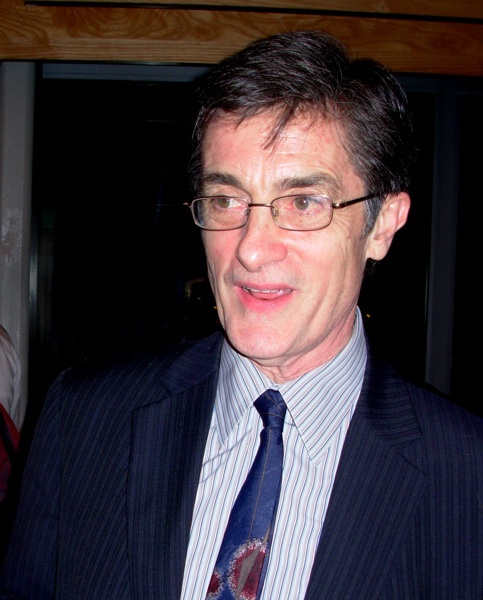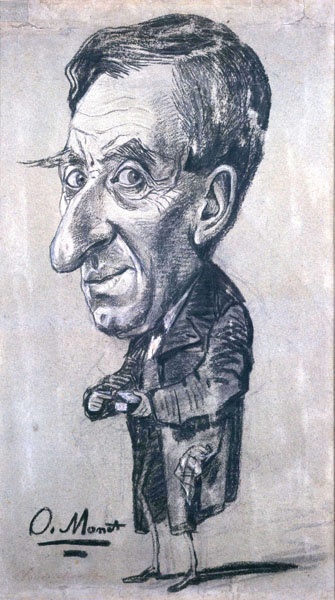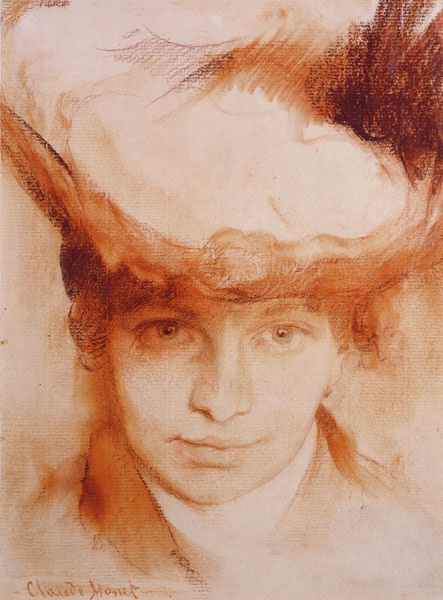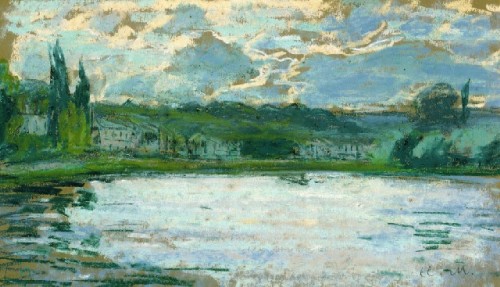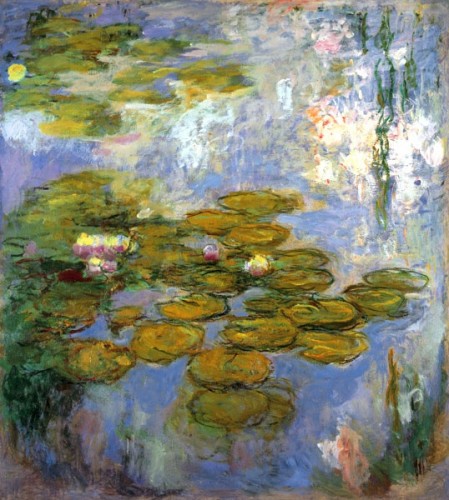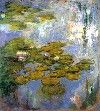Roger Rees Reads Monet's Letters at the Clark
Revealing the Human Aspect of The Unknown Monet
By: Charles Giuliano - Aug 21, 2007
In his words the French painter, Claude Monet (1840-1926), was dramatically brought to life last night on stage in the auditorium of The Sterling and Francine Clark Art Institute as Roger Rees, the artistic director of the Williamstown Theater Festival, poignantly and passionately read from a selection of letters. It marked the third season in which there was a direct collaboration between the museum and its neighboring theatre company to augment programming for a major summer exhibition. In another aspect of its effort to act as a collaborator the WTF commissioned an original play "Villa America" which dramatized the artists and writers highlighted by the Gerald Murphy exhibition "Making It New" currently on view at the Williams College Museum of Art.
This performance was meant to enhance the exhibition "The Unknown Monet: Pastels and Drawings" which remains at the Clark through September 16. While the overall voltage of this exhibition is tepid when compared to a plethora of other Monet projects over the past decade, as usual, the name Monet has worked its magic in drawing a steady flow of some 60,000 visitors to the Northern Berkshires during the height of the season. The Williams show has been widely covered in the media and has provided a nice tandem with the Clark offering while the third component of a cluster of art museums, Mass MoCA, has been mired in controversy over its "under wraps" installation by the Swiss artist, Christoph Buchel. The law suit between the artist and Mass MoCA is due in court in September.
While the Monet exhibition is of marginal interest to those who have been overexposed to the work, of which this show is at best a sidebar or footnote, the Clark, once again, has done its job by providing an exhibition with great charm and magnetism for the general public.
All things considered, Roger Rees and his WTF have more than done their part of promoting cultural tourism to Northern Berkshire County with a strong and compelling season. On the Clark stage, in front of a near to capacity audience, Rees brought tremendous insight and energy to a reading which provided compassion and context for an artist who has become an icon and brand name for museums with an eye on the bottom line.
Rees revealed precisely why Monet is so firmly recognized and admired by the general public. He brought to life the man who made the work. By now the story of the series paintings, as presented in Paul Tucker's masterful shows for the Museum of Fine Arts, Boston, is embedded in the collective conscience. We know all too well the great series of "The Grain Stacks" "Rouen Cathedral" "The Water Lilies" or "Waterloo Bridge." All of these themes as well as the early "unknown" caricatures are presented as drawings, notebooks, pastels and prints in this exhibition.
With enormous skill and eloquence Rees had us experience the despair and struggle of his life and career. There are the early letters pleading with friends for just a bit of money as his wife Camille was ill with cancer. She died at age 32. He begs a potential collector to buy anything he wants from the studio at any price but just send money so he can continue to work. There are entreaties to artist friends to join him in the ecstasy of painting directly from nature.
The evening was divided chronologically and a Clark education curator, Danielle Steinmann, provided background at intervals illustrated by slides. There was also occasional musical accompaniment in the form of a solo violin. But when it was his turn once again Rees would literally leap out of his chair and lurch forward to a music stand where there was a text to read from. With a range of gestures, verbal punctuations, and body movements he put his entire body, heart, mind and soul into inhabiting and conjuring the spirit of the artist through his torments and triumphs.
There were times when we laughed. When, for example, he describes not noticing an oncoming wave that engulfed him, swept away his canvas and materials, almost drowned him and left him with an array of colors painted onto his face and daubed into his beard. It was a richly bravura moment. And there were times when we were moved to empathy and sorrow as he reported on the deaths of Camille, later his second wife, Alice, then a son. Or his response to a four line telegram when Alice informed him that she was ending their relationship (she was married to a wealthy man who went bankrupt and disappeared). Or later, while a wealthy and successful artist living in the paradise of his country home in Giverny, he wrote of being legally blind and facing operations with uncertain results. And, despite fame and fortune, revealing expressions of doubt about his work. At the time he was working on the great panoramas of "Water Lilies" inspired by the pond in his garden.
Exiting from a most enjoyable evening we passed the restaurant of the museum and looked in. One could not help noting that the placemats on the tables were reproductions of Monet paintings. This kind of branding and marketing is now a standard part of packaging and promoting major museum exhibitions. On the subway during the MFA exhibitions you saw the shopping bags with the Monet reproduction and inevitable logos. All of this is a part of the selling of culture to the general public. The great masters get branded onto coffee mugs, tote bags, t shirts, posters, note cards, refrigerator magnets and anything else that helps the bottom line for the museum.
Last night Rees evoked the reality that this great work was created by a man; a human being, who suffered all of the chaos, loss, tragedy and triumph of any man. On this occasion there was a confluence of one great artist inhabiting the persona of another. For me, that was indeed the Unknown Monet.

